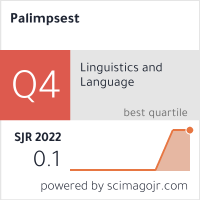ANALYSIS OF THE TIME FUNCTION IN THE SIMPLE PREPOSITIONS IN THE ITALIAN LANGUAGE AND THEIR EQUIVALENTS IN MACEDONIAN LANGUAGE
DOI:
https://doi.org/10.46763/PALIM22714065nAbstract
Prepositions have a very important function in the economy of speech: to connect different elements in a sentence and to establish a relationship between different elements in a sentence. The approach according to which prepositions express some kind of general relationship between two linguistic units builds the correct interpretation of the statement above all on the context. This functional understanding of prepositions dates back to the 16th century, when a similarity between case affixes and prepositions was perceived. Thus, prepositions express only a general relationship between two elements, and the concrete interpretation of the relationship arises from the context. The functional determination of prеpositions is often associated with their spatial and temporal meaning. In all languages that have prepositions, their most prominent function is their function to refer to a spatial and temporal relationship, so we can describe the preposition as a universal means by which spatial and temporal relationships are expressed. The subject of our research is the time function in simple prepositions in the Italian language and its equivalents in the Macedonian language.
Keywords: time function; simple prepositions; Italian language; Macedonian language; equivalents.


